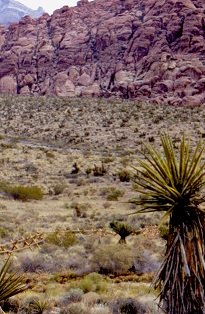Contaminated Biomes

Biomes are very large ecological areas on the earth's surface, with fauna and flora (animals and plants) adapting to their environment. Examples include deserts and temperate forests. There can be many units of ecosystems within one biome. Biomes have been altered many times during the history of life on Earth. Today we see vast areas of natural habitat changing due to human activity and the pace of the drastic alteration to these land masses is increasing.
Some pollution may stay in the area that is generated e.g. soil pollution. In other cases, pollutants are mobile. Satellites can be used to track changes through digital images, use of microwaves etc. Satellite images, for example, show that air pollution is a global problem. Air pollutants from one region can easily cause a dramatic impact in other regions due to transcontinental drift. For instance, immense carbon monoxide plumes generated in south east Asia, have been observed to move across the Pacific to North America. There is also seasonal pollution observed e.g. more fossil fuels are burned to heat homes/businesses in the northern hemisphere in winter. Likewise, water pollutants move from place to place in rivers, groundwater and in the seas. So even though an area or population may not generate pollutants, the area can be affected by pollutants from elsewhere.
Conservation and preservation of biomes should be a major agenda item for the world’s governments, policy makers and environmental protection organisations. Maintaining biodiversity is crucial and protecting biomes from further impacts is critical as many in turn affect global systems. We now explore the effects of the contaminants on some of the world’s natural habitats.
Tundra biomes
Originally, these may have been pristine areas, but decades of mining, industry and development have lead to contamination. Even in remote areas, far from any human habitation, unwelcome encounters with rubbish and waste from mining, gas extraction and military activities are reminders of the vulnerability of these cold areas. In remote areas of Greenland for example, plastic bags, fishing nets, barbed wire, fuel tanks and bottles are to be found washed up on shores seldom visited by humans. Gas or fuel pipelines in arctic areas are notorious for problems such as leaks, oil well blow- outs, waste and theft, with estimates of up to 10% fuel losses in some areas. Increased UVB radiation and ozone depletion has effects on humans and other organisms, with holes in the ozone layer found in both the Arctic and Antarctic.
Atmospheric and marine pollution means organic contaminants enter the food chain at every level. Because these persistent organic pollutants break down more slowly in the Arctic than in warmer regions, they pose greater dangers to human and animal populations. For example, high PCB levels have been found in polar bears, walrus and seals. Tundra ecosystems are also at risk from the dumping of nuclear waste. Heavy metal pollutants such as lead and copper have also been found in lichens and mosses in tundra regions.
Arctic ecosystems are extremely sensitive to climate change and a likely increase in average winter temperatures of between three to six times the global average is predicted. There is already evidence of decreases in sea ice masses and permafrost. This affects many aquatic species, fish stocks and mammal populations. Also affected are millions of migrating birds as they can no longer find food along their flight paths. Arctic climatic processes influence global conditions, including sea water levels.
Forest Biomes
These include temperate, tropical and boreal forests. Forests around the world are affected by air and water pollution, produced from industrial and commercial activities. Besides the pollution caused by oil spills, toxic by-products, and mining accidents, rainforests are seriously degraded by air pollution. Acid rain has been increasing in the tropics in recent decades due to growing industrialization and subsequent air pollution and this takes its toll on tropical forests. It has already caused severe problems in temperate forests e.g. in Europe. Industrial emissions that contribute to acid rain have decreased, although vehicle emissions are still a problem.
Increased deforestation, wood burning and agricultural development contributes to air pollution, soil erosion and water/groundwater pollution in many forest biomes. As many as 27,000 square km of forest were estimated to have been cleared in the Amazon in the early 2000's, however, this has slowed. Fertilisers and pesticides used in agricultural areas adjacent to forests can take a toll on forest wildlife, including critical pollinators and seed dispersers. Biodiversity suffers and species become extinct.
Climate change affects the growth of forests and can impact their productivity. Warming from higher atmospheric carbon dioxide levels can make growing seasons longer and cause some areas to experience more droughts. Clearing/burning of forest in turn affects the global carbon dioxide cycle and affects climate change.
Grassland Biomes
Natural grasslands, like forests, are disappearing due to land clearing for farming and urban development. Soil erosion and water pollution increase due to runoff from cleared or poorly farmed areas. Fertilisers can move with runoff into waterways where the excessive nutrients cause algal growth (eutrophication). Biodiversity has decreased due in part to successful invasion of alien species (such as invasive weeds), feral animals and increased grazing by livestock. Other problems include increased drought from climate change and frequent fires.
Desert Biomes
Desert biomes cover about 20% of the planet and are increasingly threatened. Desert biomes include semi-arid and arid areas and coastal and cold deserts. Drilling, extraction and burning of fossil fuels, endangers many desert biomes. They are increasingly being opened for transport networks, which means more vehicles with emissions affecting air quality and off-road vehicles when used irresponsibly, can cause irreparable damage to desert habitats.
Some deserts are used as dumping grounds for radioactive and chemical waste. Increasing dry periods and lack of vegetation from climate change can lead to more dust storms which further affect plant and animal species. Feral animals, such as camels, may decrease vegetation cover. Abstraction of groundwater causes further problems.
[13/12/2025 01:20:00]